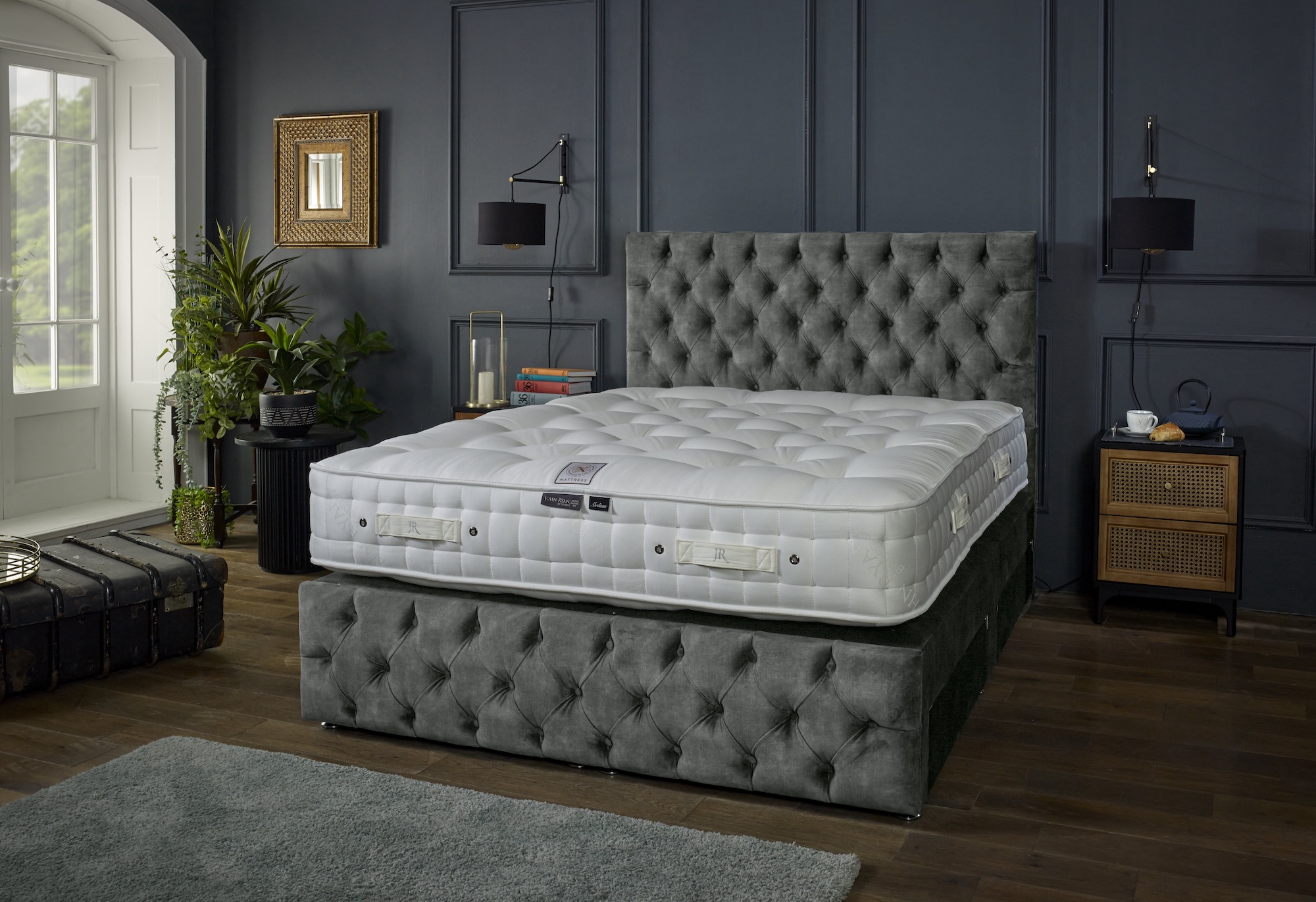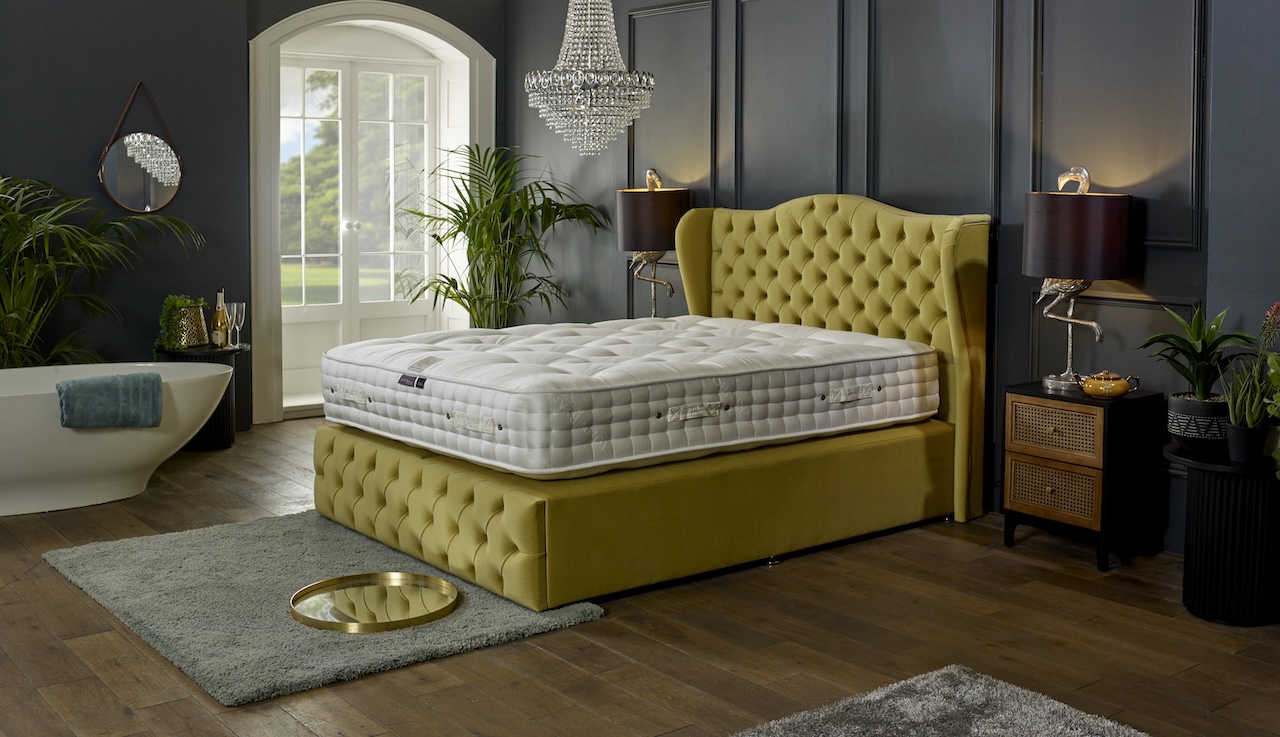Mattress Upholstery, Mattress Choices
August 2025All about natural fibres in mattresses
Natural fibres in mattresses represent the pinnacle of sleep technology. Materials like wool, horsehair, cashmere, and bamboo have evolved over millions of years to regulate temperature, wick moisture, and provide exceptional comfort. Unlike synthetic alternatives that trap heat and break down quickly, natural fibres create breathable, durable sleep surfaces that adapt to your body’s needs throughout the night.

As one of the UK’s few remaining independent mattress manufacturers with over 25 years of expertise, we’ve witnessed the industry’s shift towards cheaper synthetic materials disguised as “natural.” Here’s the uncomfortable truth: many mattresses marketed as “natural fibre” contain just 1-3% actual natural materials, with the remainder being polyester and synthetic fillings.
In this comprehensive guide, we’ll expose these industry practices while explaining exactly how genuine natural fibres work, their specific benefits for different sleep needs, and why GSM (grams per square metre) specifications matter more than marketing descriptions. You’ll discover which natural fibres suit hot sleepers, how to identify truly natural mattresses, and why our Artisan range uses only 100% natural fibres with full transparency about every layer’s composition.
As unashamed “mattress nerds” and members of the Guild of Master Craftsmen, we believe you deserve the truth about what you’re sleeping on.
Jump to
- What are natural fibres in mattresses?
- Why don’t retailers tell you what’s in their mattresses?
- Animal vs Plant Fibres
- Why natural fibres are superior for sleep
- Natural Fibres Functions for Mattress Construction
- Hybrid Fibres Explained
- Cost of Natural Fibres
- Understanding GSM
- Choosing the right mattress (Hot Sleepers, Allergies & Support)
- Caring for your Natural Fibre Mattress
What Are Natural Fibres in Mattresses?
Natural fibres in mattresses are materials sourced directly from living organisms—either animals or plants—that have evolved sophisticated properties for insulation, breathability, and resilience over millions of years.
These fibres include:
- Wool from sheep
- Horsehair from horses
- Cashmere from goats
- Bamboo from plants
- Cotton from cotton plants.
Unlike synthetic materials manufactured from petroleum-based chemicals, natural fibres possess inherent characteristics that make them ideally suited for sleep surfaces: they regulate temperature, wick moisture away from the body, maintain structural integrity over decades, and provide natural fire resistance without chemical treatments.
In mattress construction, natural fibres serve three critical functions:
- Support (providing structural stability)
- Comfort (creating the sleep surface feel)
- Insulation (managing temperature and moisture).
Each fibre type offers unique properties. For example horsehair provides springy resilience, wool offers temperature regulation, cashmere delivers luxurious softness, and plant fibres like bamboo contribute breathability and sustainability.
Why don’t retailers tell you what natural fibres are in their beds (if any)?
Natural fibres are also incredibly resilient and far outlast polyester and ‘white fibre’. However, did you ever wonder why retailers don’t tell you the exact GSM (grams per square meter) of these wonderful fibres? Instead, they lead with sumptuous, exquisite or dreamy descriptions that give no real detail. Why is this?
Would it shock you to know that the majority of ‘Natural fibre mattresses‘ may only contain 1%-3% actual Natural Fibre? These fibres can be blended with polyester and other cheaper fibres. meaning you’re paying for a Natural Fibre mattress but really just getting a cheap synthetic one instead.
If you see descriptions like ‘Contains silk, cashmere and wool’, then the chances are this is just a tiny portion of the overall fibre blend. You really need to know the exact GSM to know if its a true natural fibre mattress.
Here are six common phrases mattress manufacturers use to suggest natural fibre content without committing to 100% natural fibres:
- “Contains natural fibres” – This could mean as little as 1% natural content mixed with 99% synthetic materials.
- “Features wool comfort layers” – The layer might be 95% polyester with just 5% wool, technically making it a “wool” layer.
- “Enriched with natural materials” – Vague language that implies enhancement but gives no indication of actual quantities or percentages.
- “Natural fibre blend” – Often means predominantly synthetic with token natural fibres added, with no specification of the blend ratio.
- “Inspired by nature” – Meaningless marketing speak that suggests natural content without making any factual claims about fibre composition.
- “Enhanced with organic cotton” – Could describe a mattress where organic cotton represents less than 10% of the total fibre content, with the remainder being synthetic.
These phrases are designed to appeal to consumers seeking natural products whilst providing legal protection for manufacturers using primarily synthetic materials. They create the impression of natural fibre mattresses without the transparency that genuine natural fibre content requires.
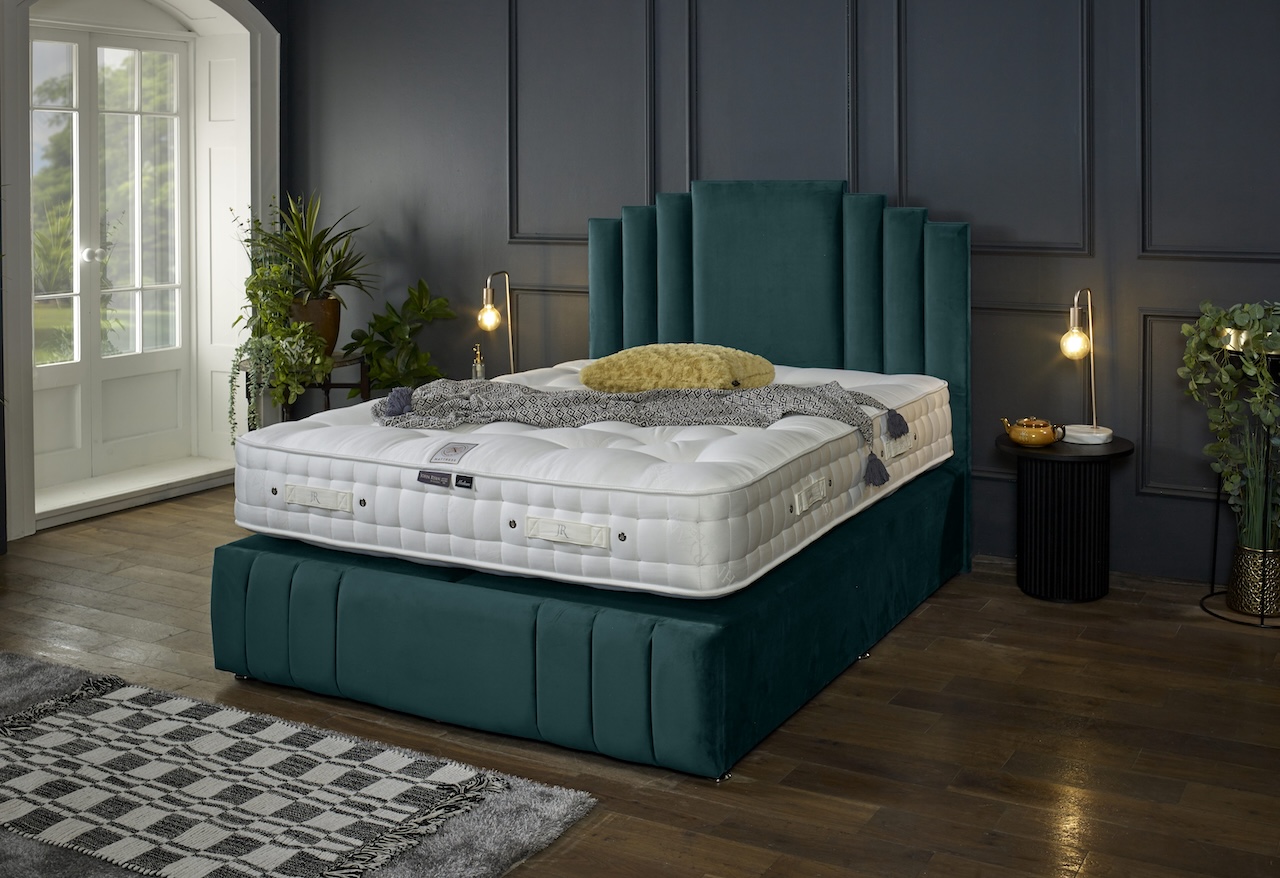
Animal vs Plant Fibres: Understanding the Difference
Now that you understand just why natural fibres are the ultimate mattress-making fibre, it is worthwhile understanding the differences between natural animal fibres and those from plants.
Animal Fibres
Animal fibres are proteins harvested from mammals, each offering distinct advantages based on the animal’s natural environment and survival needs. These fibres typically provide superior insulation and moisture management because animals have evolved these properties for temperature regulation in varying climates.

Key Animal Fibres:
- Wool (Sheep): The most versatile animal fibre, naturally fire-resistant and temperature-regulating. British fleece wool can absorb up to 30% of its weight in moisture without feeling damp.
- Horsehair: Exceptionally resilient and springy, horsehair acts like millions of tiny springs within the mattress. Each strand is hollow, promoting airflow while providing secondary support that prevents compression.
- Cashmere (Goats): The softest and most expensive animal fibre, providing luxurious comfort. Cashmere fibres expand in cold conditions for insulation and contract in warmth for cooling.
- Alpaca: Similar to cashmere but more durable, alpaca fibres offer excellent temperature regulation and are naturally hypoallergenic.
- Mohair (Angora Goats): A premium insulator fibre that’s both resilient and breathable, often used between spring units and comfort layers.
Plant Fibres
Plant fibres are cellulose-based materials that typically excel in breathability and sustainability. While generally less expensive than animal fibres, quality plant fibres offer excellent ventilation and cooling properties.

Key Plant Fibres:
- Cotton: Highly breathable and soft, organic cotton provides excellent moisture absorption. However, it can compress over time without proper blending.
- Bamboo: Naturally antibacterial and exceptionally breathable, bamboo fibres offer excellent temperature regulation and are environmentally sustainable.
- Coir (Coconut Husk): Provides firm support and excellent ventilation, often used in support layers for those requiring firmer sleep surfaces.
- Flax/Linen: Excellent for hot sleepers due to superior cooling properties and moisture-wicking capabilities.
Plant fibres include Bamboo, Flax, Coir and Hemp
Animal fibres range from Wool, Horsehair, Horsetail, Alpaca, Vicuna and Cashmere
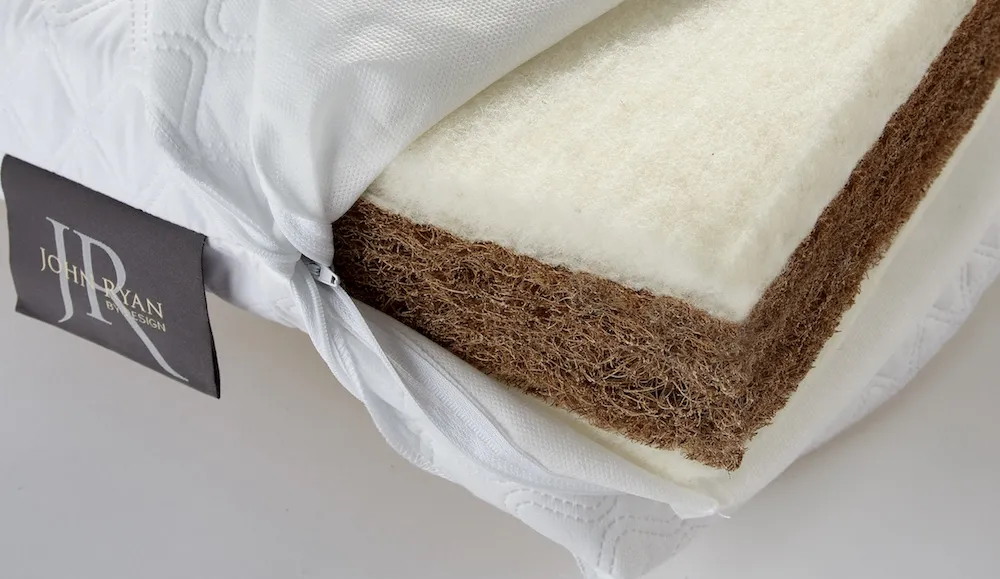
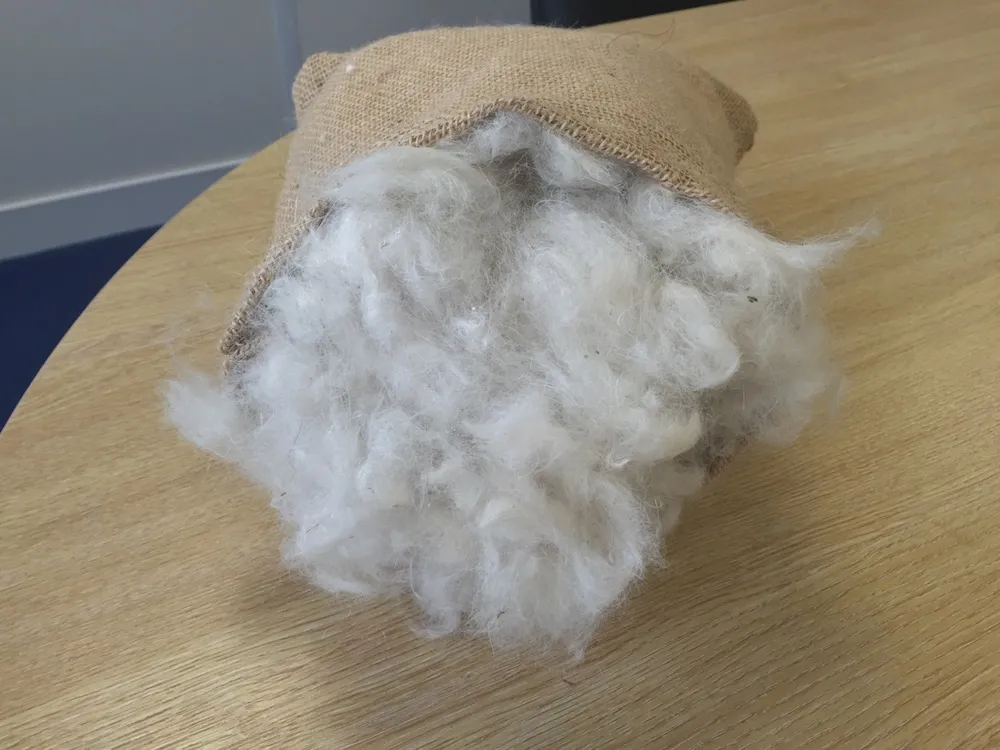
Why Natural Fibres Are Superior for Sleep
A) Breathability: Nature’s Ventilation System
Natural fibres have evolved sophisticated ventilation systems that synthetic materials simply cannot replicate. Wool fibres have a natural crimp that creates air pockets for ventilation, while horsehair strands are hollow, creating miniature air channels throughout the mattress. This three-dimensional breathability allows air to circulate freely, preventing the heat buildup that causes night sweats and restless sleep.
In contrast, synthetic foams and polyester create dense barriers that trap body heat and moisture. Memory foam, in particular, is designed to soften with heat—meaning the warmer you get, the more you sink, creating a heat-trapping cycle that disrupts natural sleep patterns.
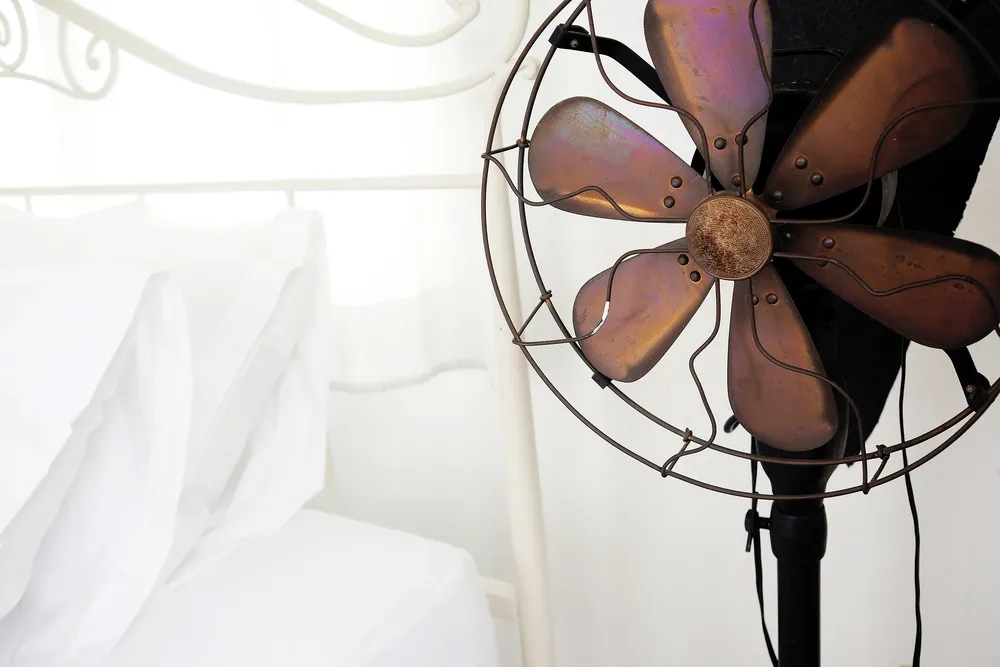
B) Durability: Investment in Long-Term Comfort
The protein structure of animal fibres and the cellular structure of plant fibres provide exceptional resilience that maintains shape and support for decades. Wool fibres can be compressed and released millions of times without losing their spring-back properties. Horsehair’s natural elasticity means it continues providing secondary spring support even after 20+ years of use.
Synthetic materials, particularly foams, break down at the molecular level through oxidation and compression fatigue. Polyester fibres lose their loft and become compacted, while memory foam develops permanent impressions that cannot be reversed. This degradation typically becomes noticeable within 3-5 years, requiring mattress replacement far sooner than natural fibre alternatives.
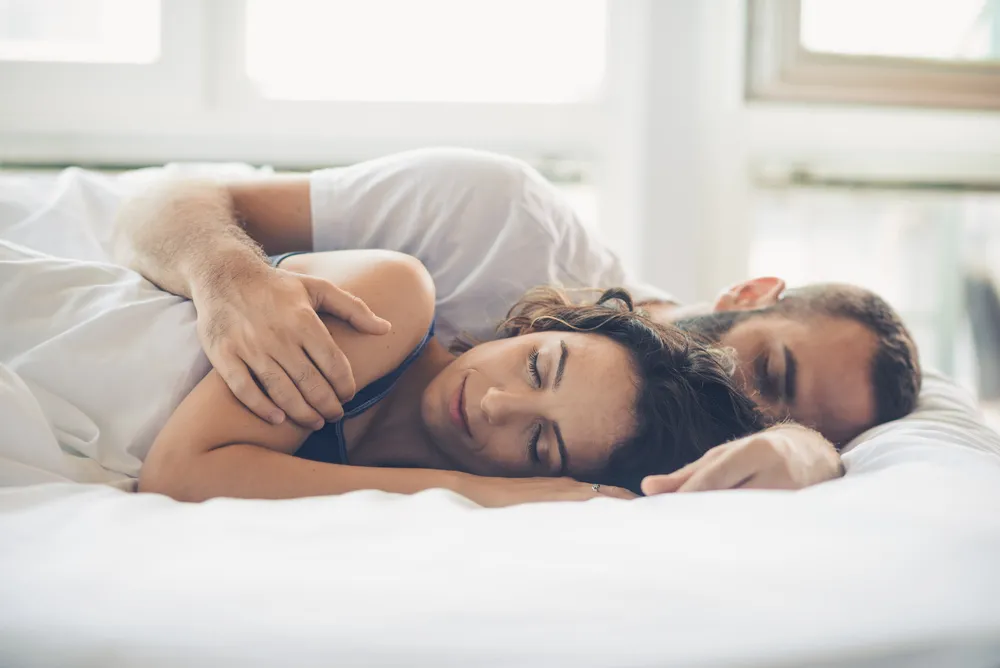
C) Temperature Regulation: Adaptive Comfort Technology
Natural fibres possess hygroscopic properties—they absorb and release moisture based on environmental conditions. Wool can absorb up to 35% of its weight in moisture while still feeling dry to the touch, then release this moisture when conditions change. This creates a microclimate that adapts to your body temperature and the room’s conditions throughout the night.
Cashmere and alpaca fibres have evolved to handle extreme temperature variations, making them naturally adaptive to seasonal changes. Plant fibres like bamboo offer excellent moisture-wicking without the insulation properties, making them ideal for consistently hot sleepers.
Synthetic materials lack this adaptive intelligence. They maintain static properties regardless of temperature or humidity changes, forcing your body’s thermoregulation system to work harder to maintain comfortable sleep temperature.
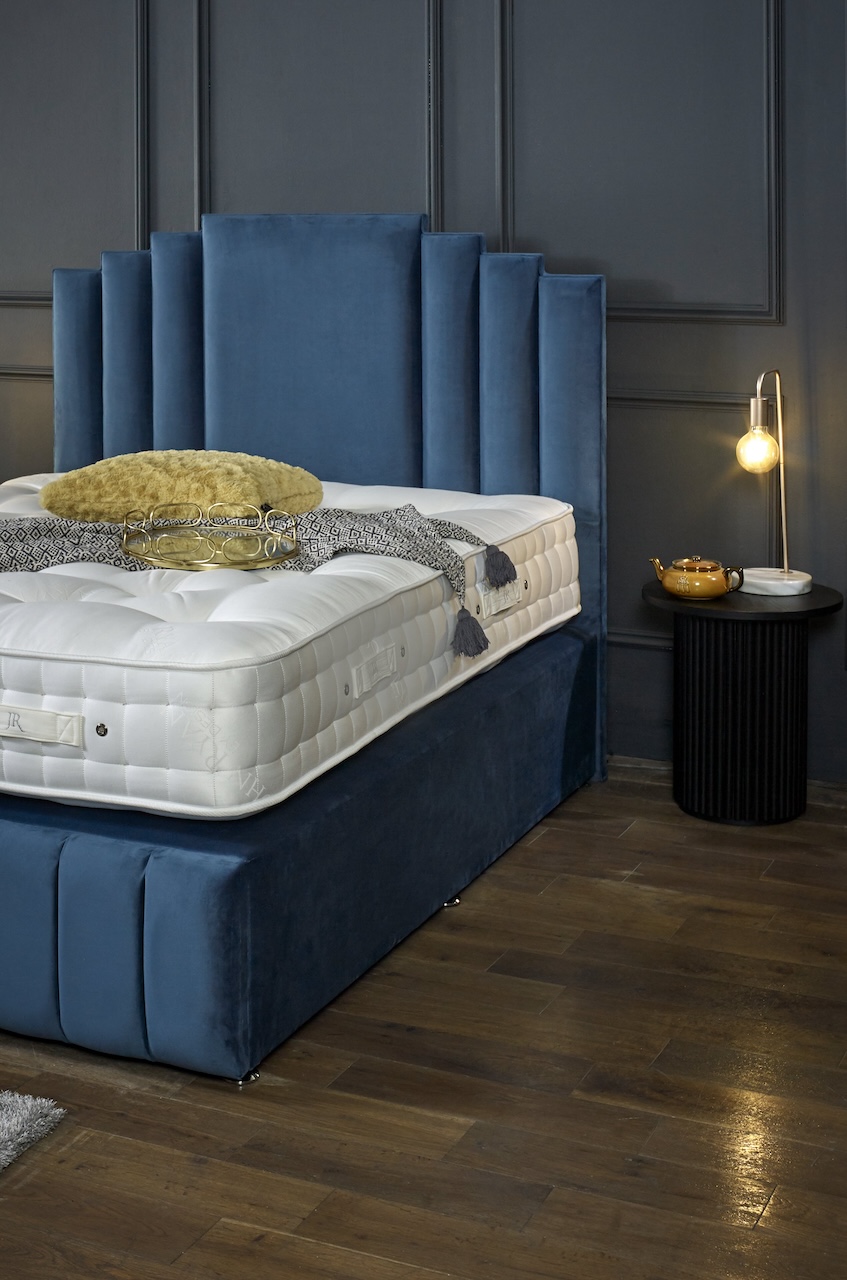
D) Health Benefits: Chemical-Free Sleep Environment
Natural fibres require minimal processing and no chemical fire retardants to meet UK safety standards. Wool is inherently fire-resistant, simply charring and self-extinguishing when exposed to flame. This means no off-gassing of chemicals or volatile organic compounds (VOCs) that can affect sleep quality and respiratory health.
Synthetic mattresses rely heavily on chemical fire retardants, adhesives, and stabilisers that can off-gas for months or even years after manufacture. These chemicals have been linked to sleep disruption, respiratory irritation, and other health concerns—particularly problematic since we spend 6-8 hours nightly in close contact with our sleep surface.
| Aspect | Natural Fibres | Synthetic Fibres |
|---|---|---|
| Breathability | Excellent – natural ventilation | Poor – traps heat |
| Durability | 15-20+ years | 5-7 years |
| Temperature | Self-regulating | Heat retention |
| Moisture | Wicking properties | Can create dampness |
| Chemicals | Chemical-free | Treated with fire retardants |
| Cost | Higher initial, lower lifetime | Lower initial, higher lifetime |
Natural Fibre Functions in Mattress Constructions
All Mattress upholstery products are divided into just three elements
- Support
- Comfort
- Insulation
There is a post here on the techniques of mattress construction that will detail this aspect in greater detail. The basic thing to understand is that mattresses should be built using ‘gradual suspension’ as the fundamental basis of design. Quite simply, this means that as the sleeper lays on top of the mattress the supportive properties should be minimal on the first layer and slowly progressing slightly firmer through each element until you reach the spring support which will be the firmest element within the mattress.
As a general guide, the following materials can be broken down into elements showing which component is used for each general purpose.
1. Support Layers
The support elements in a mattress are usually used directly on top of the spring unit. For example, course cashmere is often used as an insulator directly on top of the pocket spring unit in our Artisan 1500 mattress. They can also be used further up the upholstery to help provide support and stability.
Examples of support layer natural fibres are:
- Horsehair
- Coarse cashmere
- Coir
- Cattle hair
- Mohair
Horsehair provides the ultimate support foundation, with each individual hair acting as a microscopic spring. The natural resilience of horsehair means it bounces back from compression instantly, providing consistent support night after night. We typically use horsehair in GSM weights of 900 to 1350 per square metre in our support layers, depending on the desired firmness level.
Coir creates zoned support areas where additional firmness is required. Its natural firmness makes it ideal for supporting heavier body areas such as hips and shoulders, preventing the sinkage that creates pressure points. Coir layers work harmoniously with pocket spring systems, enhancing rather than interfering with the springs’ natural motion.
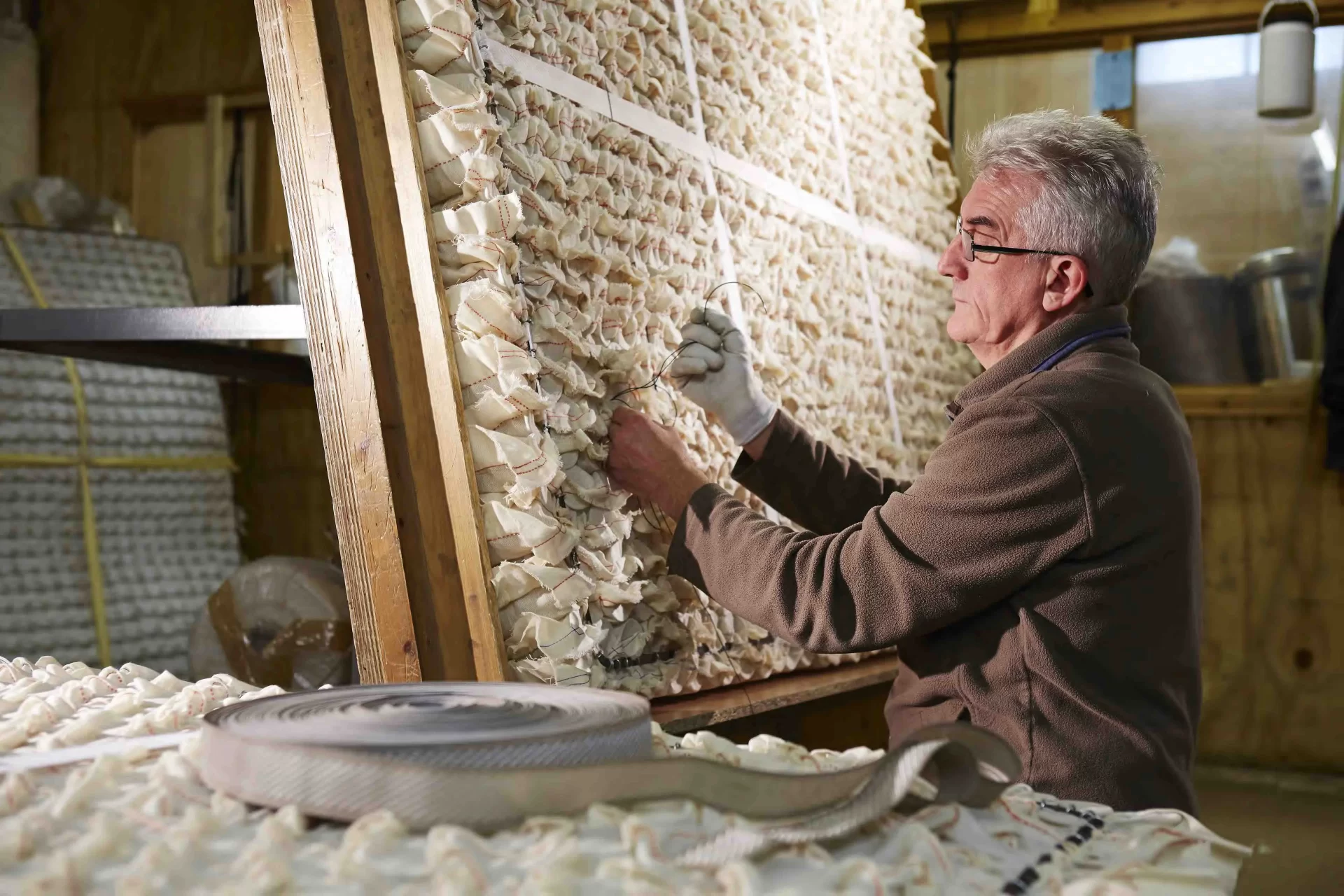
The interaction between natural fibres and spring systems creates support characteristics impossible to achieve with synthetic alternatives. Natural fibres compress and recover at rates that complement pocket spring motion, creating a unified support system that responds to your body’s needs throughout the night.
GSM requirements for support layers vary depending on the desired firmness and the specific fibres used. Our craftsmen have developed precise specifications through decades of experience, ensuring each mattress provides the intended support level whilst maintaining long term durability.

2. Comfort Layers
Comfort layers determine how your mattress feels against your skin and how effectively it manages temperature and moisture. Natural fibres excel in comfort applications because their cellular structures create environments that adapt to your body’s needs.
Examples of comfort layer natural fibres are:
These comfort layers are the fibres that will give you the overall ‘feel’ of the mattress. So it is worth paying particular attention to the layers used above the spring and support unit. The list above gives you the order with the most expensive at the bottom. Alpaca is one of the world’s finest fibres, being both super soft and breathable. The difference in price is due to exclusivity and how readily available certain animal fibres are.
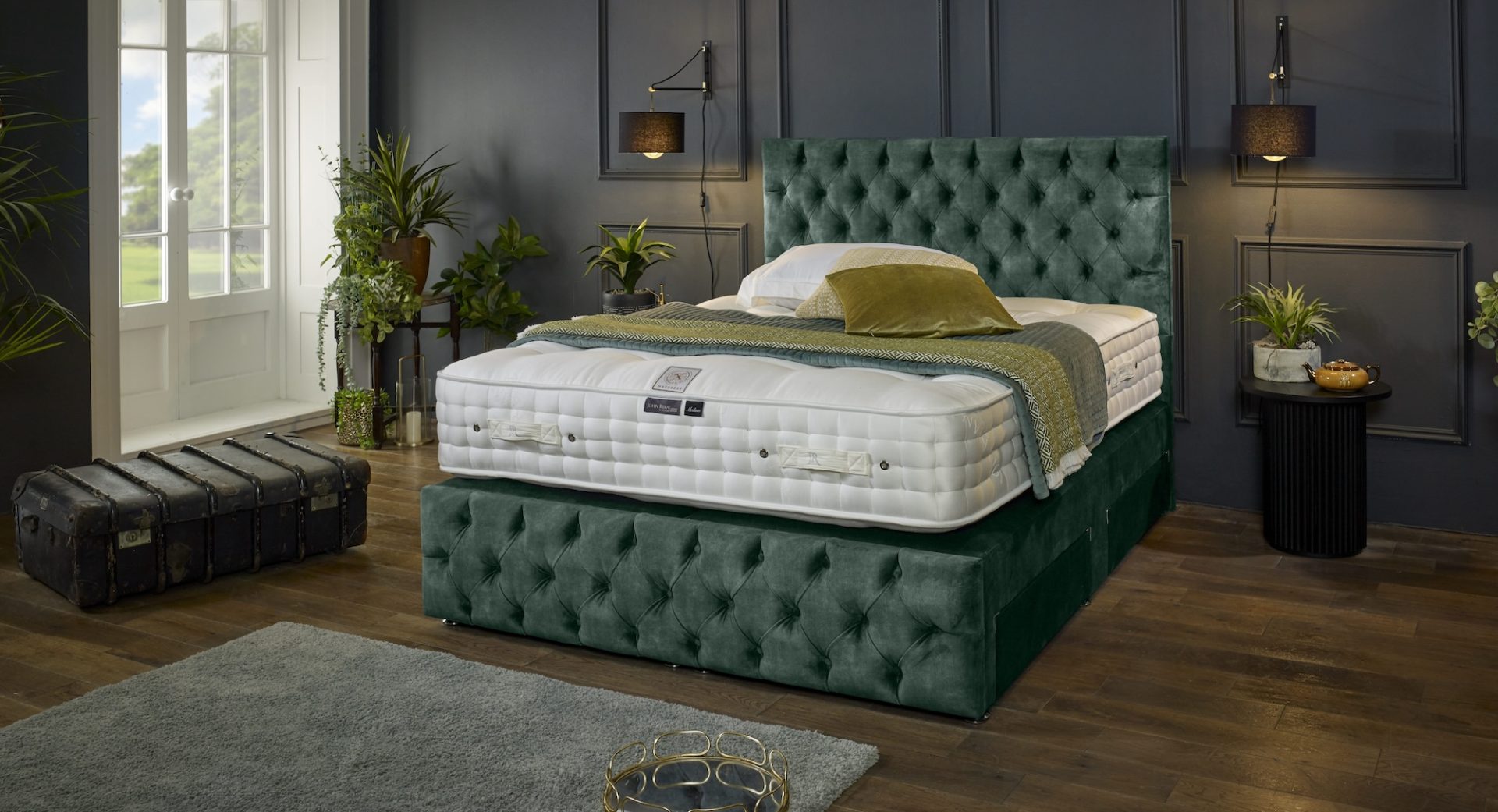
For example, there are far more sheep readily available than Alpacas. They are also relatively easy to shear, with more skilled shearers available for sheep than Alpacas. Did you know that nearly all UK Alpacas are sheared once a year by a specialist team from the USA that comes over to shear independent Alpaca farms? This is due to the skill and care needed to shear their super soft fleece.
Wool comfort layers provide gentle cushioning whilst actively managing moisture and temperature. The natural crimp in wool fibres creates air pockets that adjust to your body weight, providing personalised comfort that improves with use. We typically use British wool in GSM weights of 600 to 900 per square metre in our comfort layers.
Cashmere transforms the sleep surface into a luxury experience, providing softness that rivals the finest hotels. Its microscopic fibre diameter creates a surface that feels impossibly smooth whilst maintaining the breathability essential for comfortable sleep. Even small amounts of cashmere, typically 200 to 300 GSM, significantly enhance the comfort characteristics.
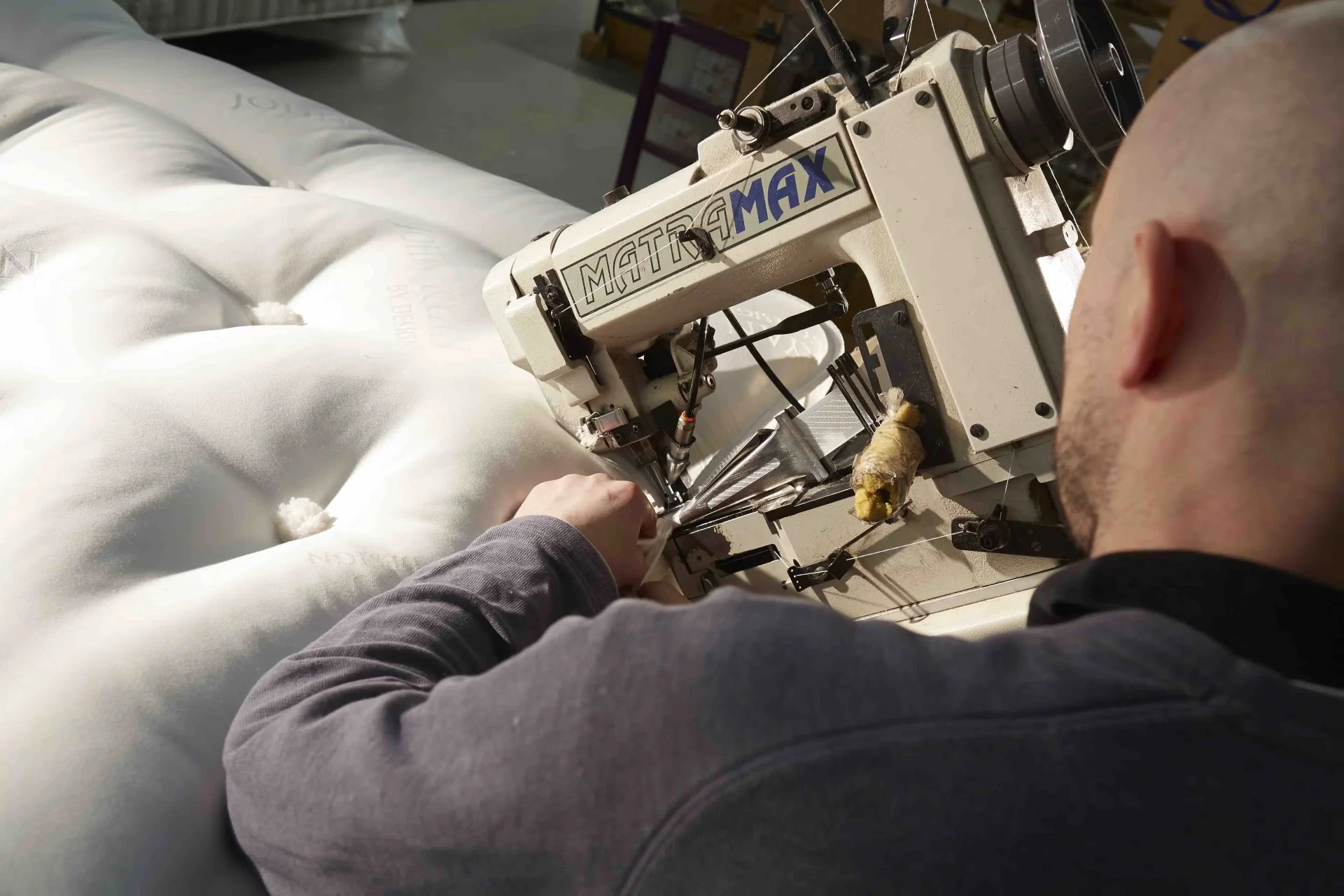
Cotton comfort layers provide a clean, fresh feel that appeals to sleepers who prefer natural materials without animal products. Organic cotton’s moisture absorption capabilities make it ideal for warm sleepers or those living in humid climates.
Pressure point relief occurs naturally when comfort layers properly distribute your body weight. Natural fibres achieve this through their ability to compress selectively, providing more cushioning where pressure is greatest whilst maintaining support where it’s needed most.
Sleep surface feel varies dramatically depending on the natural fibres used in comfort layers. Wool provides a slightly springy feel that many customers describe as ‘alive’, whilst cotton offers a more stable, consistent surface. Combining different natural fibres allows us to create comfort characteristics that match individual preferences.

3. Insulation Layers
Insulation layers regulate the flow of temperature and moisture between your body and the support structure of your mattress. Natural fibres excel in insulation applications because their cellular structures create barriers that regulate rather than block air and moisture movement.
Temperature regulation fibres such as wool and alpaca contain air pockets that expand when warm and contract when cool, creating automatic climate control. This natural thermostat effect maintains comfortable sleeping temperatures regardless of seasonal changes or individual body temperature variations.
Moisture management occurs through natural fibres’ ability to absorb, transport, and release humidity without feeling damp. This three-stage process prevents the moisture buildup that creates uncomfortable sleeping conditions whilst protecting the structural components of your mattress from humidity damage.
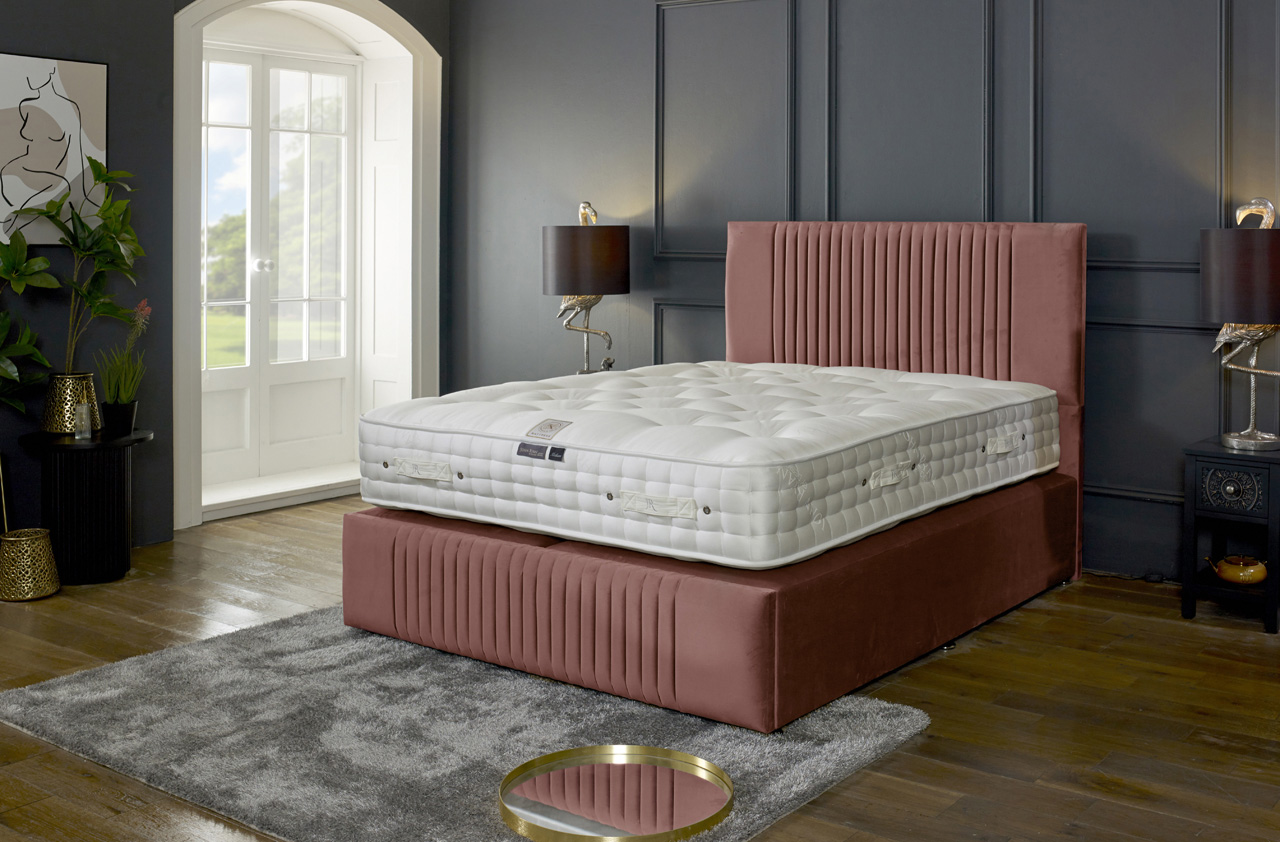
Seasonal adaptation becomes automatic with properly designed natural fibre insulation layers. The same mattress that keeps you comfortable during summer heat will provide cosy warmth during winter cold, adjusting naturally to environmental changes without any intervention from you.
Mohair is a premium insulator fibre for a mattress being resilient and breathable
Wool and Alpaca are super soft which makes them great for the top comfort layer

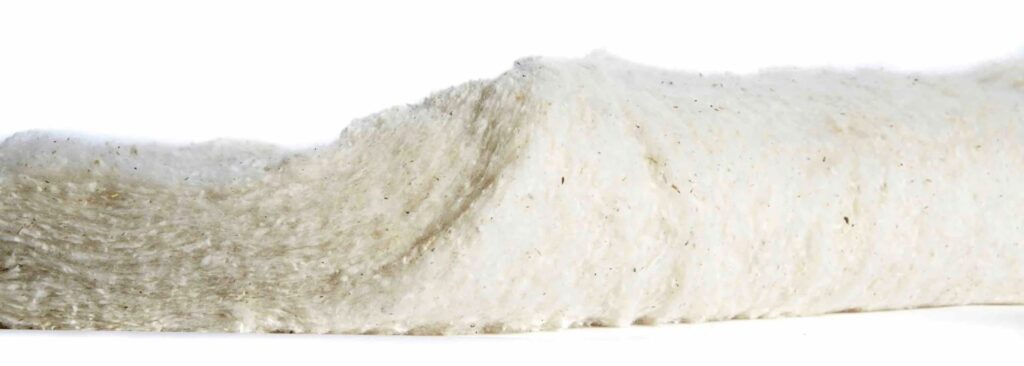
Now, this is not a hard and fast breakdown. Although the materials listed above can be used individually or combined to produce a fabulous mattress, elements can be interchanged to create bespoke models tailored to the end user.
For example, to produce a very soft mattress upholstery, bonded wool and cotton can be used as the support element and separate layers of wool and blended wool and cotton can be used as the comfort elements.
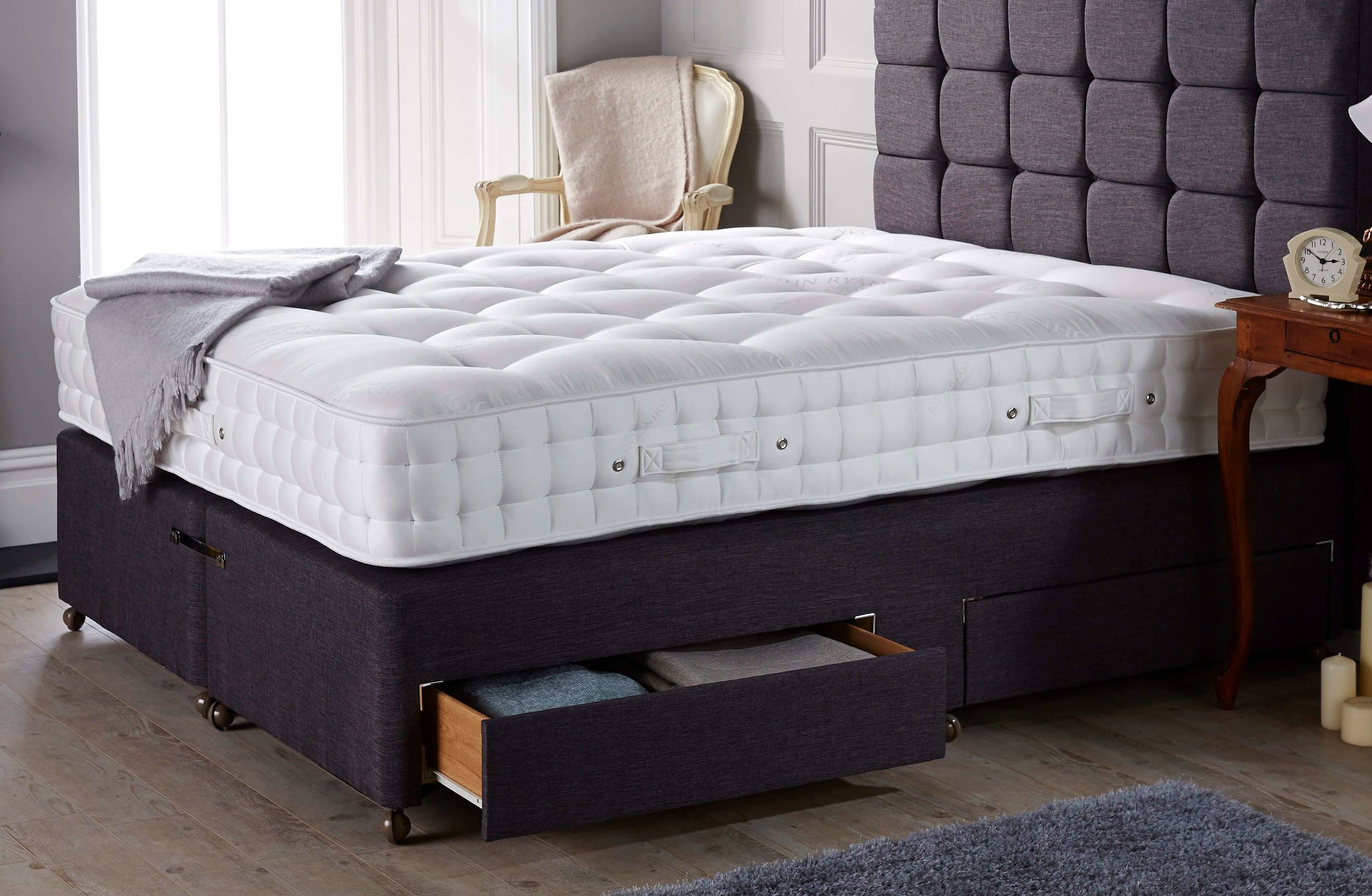
To create a slightly more supportive feel to the upholstery a blended horsehair and wool component can be used in the middle of the upholstery layers along with Alpaca as the finishing layer. The variables are endless, creating a subtle difference to the overall feel of the mattress depending on the layers used. You need to take care when looking at natural fibre mattresses that claim to be filled with super soft fibres, which they also claim to have a medium or firm feel in the upholstery layer. The reason is that wool, cotton and alpaca are all very soft, so they need to be layered with firmer fibres like horsehair or hemp to help keep their loft and stop compression.
Why it’s essential to ask Retailers What’s in their Mattresses
However, a number of retailers will blend wool or alpaca with polyester to help firm it up drastically, reducing the benefits of the natural fibre and lowering the cost. You’re still left paying a premium price, though. So when looking at natural fibre mattresses, you need to ask ‘is this mattress 100% natural fibre?‘ and if not, you will need to enquire about what fibres they have blended and with what!
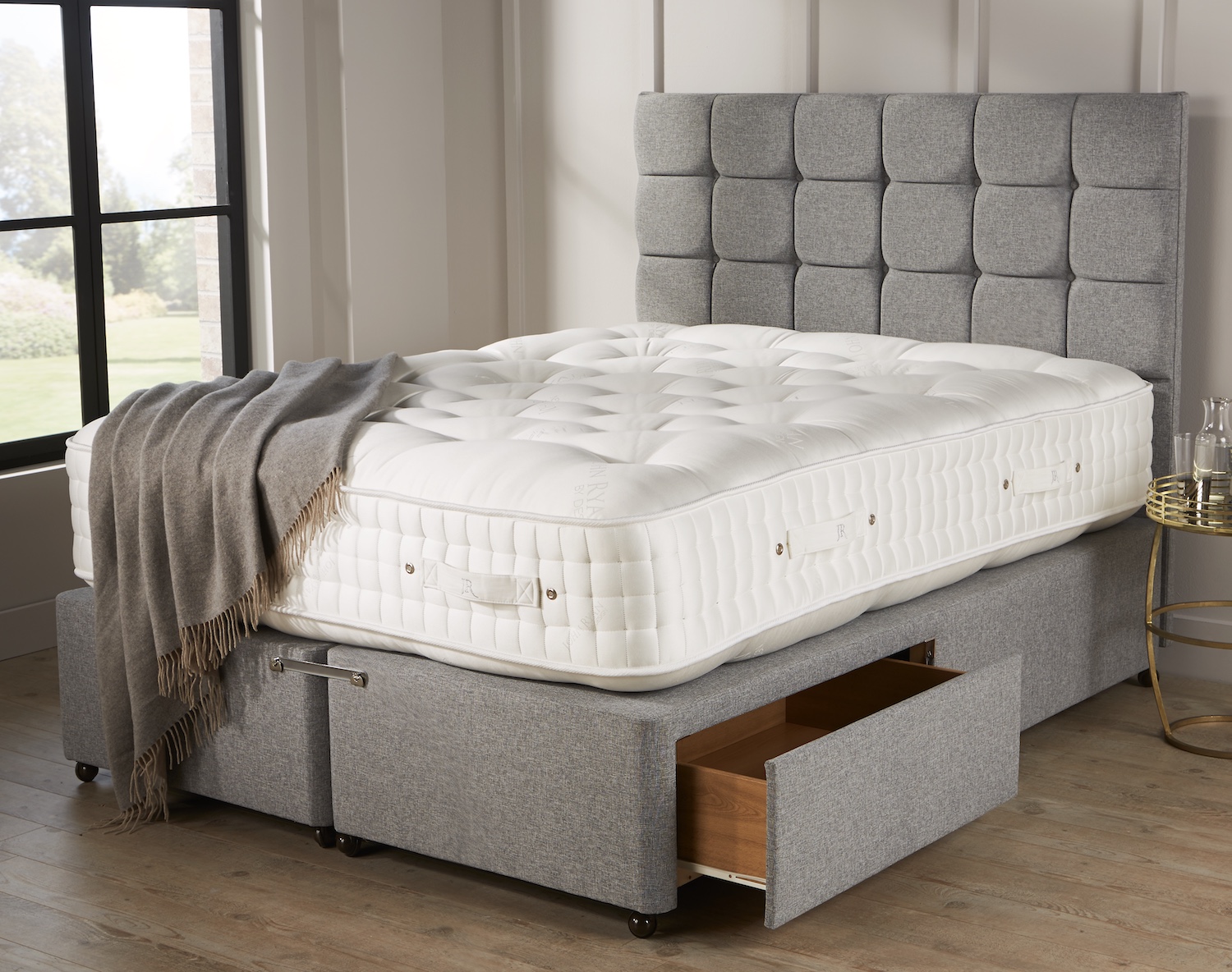
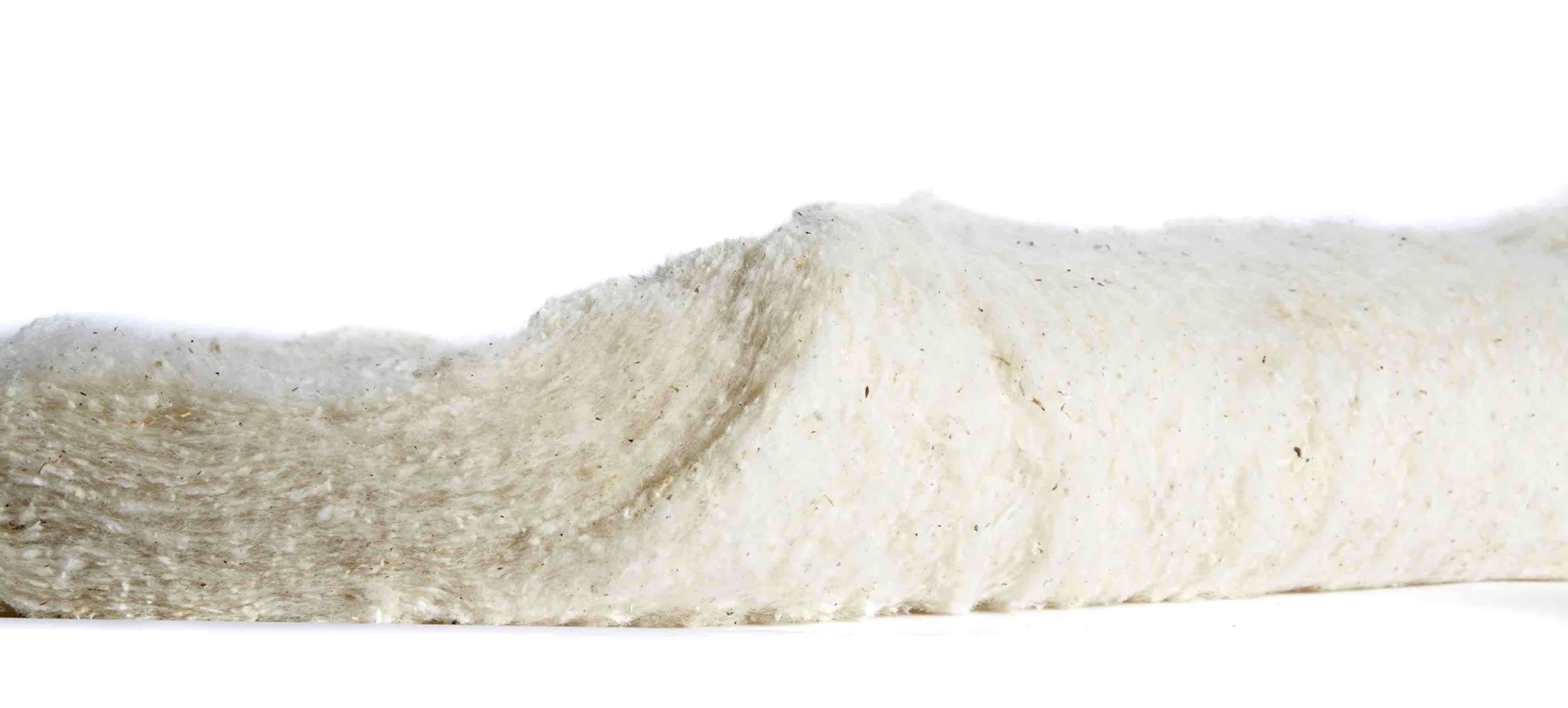
Hybrid Fibres
The use of entirely natural fibres in a mattress sets the mattress apart from those that utilise man-made fibres such as polyester and/or foams. There is a middle range known as hybrids where the mattress is upholstered with a mix of both natural Fibres and man-made.
This type of build can be where confusion is most likely to be had when reading product descriptions, as some manufacturers tend to ‘forget’ to list the man-made components and just mention the natural fibre elements – therefore, you could be misled into thinking your mattress contains a greater degree of premium natural fibre upholstery than it actually does!
Nine times out of ten, you can spot these products just from the retail price asked; however, it is unlikely you will know the actual value of a particular component and therefore, quite wrongly take the description for granted that it is what it is. In general terms, and once you know the value and worth of a produc,t you too will be able to spot if something is not right, and so the list below puts the most popular components into some kind of value pyramid:
The cost of natural fibres
| Natural fibre | Cost / Availability |
|---|---|
| Alpaca | Very expensive (low supply chain) |
| Bamboo | Average price (good supply chain) |
| Camel | Very expensive (low supply chain) |
| Cashmere | Expensive (good supply chain) |
| Cattle Hair | Average price (good supply chain) |
| Coir | Average price (good supply chain) |
| Cotton | Very expensive (good supply chain) |
| Flax | Average price (good supply chain) |
| Hemp | Average price (good supply chain) |
| Horsetail | Very expensive (low supply chain) |
| Horsehair | Less expensive (good supply chain) |
| Mohair | Expensive (low supply chain) |
| Silk | Very expensive (low supply chain) |
| Vicuna | Very Expensive (Most expensive natural fibre in the world) |
| Wool | Moderate to expensive (good supply chain) |
Take the above list of products to be the bulk of what you will find within a mattress. You will see that there really isn’t that much a manufacturer can include within a specification to differentiate one model from another significantly. Knowing this should make you realise that, out of all the mattresses, there must be a significant number of practically identical models. Read How to compile a mattress comparison. Of course, to really differentiate, you will have to know the weight of each product actually utilised (GSM).

You will notice that the most expensive products are made with animal fibre components, and generally, due to the processing costs involved, they carry premium prices. The plant fibres are obviously in abundant supply, and the availability is greater, but again, the costs to harvest and process give the product its value and worth. With mattresses upholstery, you really do get what you pay for, so it’s in your best interests to ask as many questions about those fibres as you can.
Understanding GSM (Grams per Square Metre) in Natural Fibres
GSM measurement provides the most accurate way to evaluate natural fibre content in mattresses. Unlike vague descriptions such as ‘generous amounts’ or ‘luxurious layers’, GSM gives you precise information about what you’re purchasing.
Why GSM matters more than marketing descriptions becomes clear when you compare mattresses from different manufacturers. A mattress advertised as containing ‘wool comfort layers’ might contain anywhere from 200 to 2000 GSM of wool, representing vastly different comfort and performance characteristics. Without GSM specifications, you’re purchasing blindly.
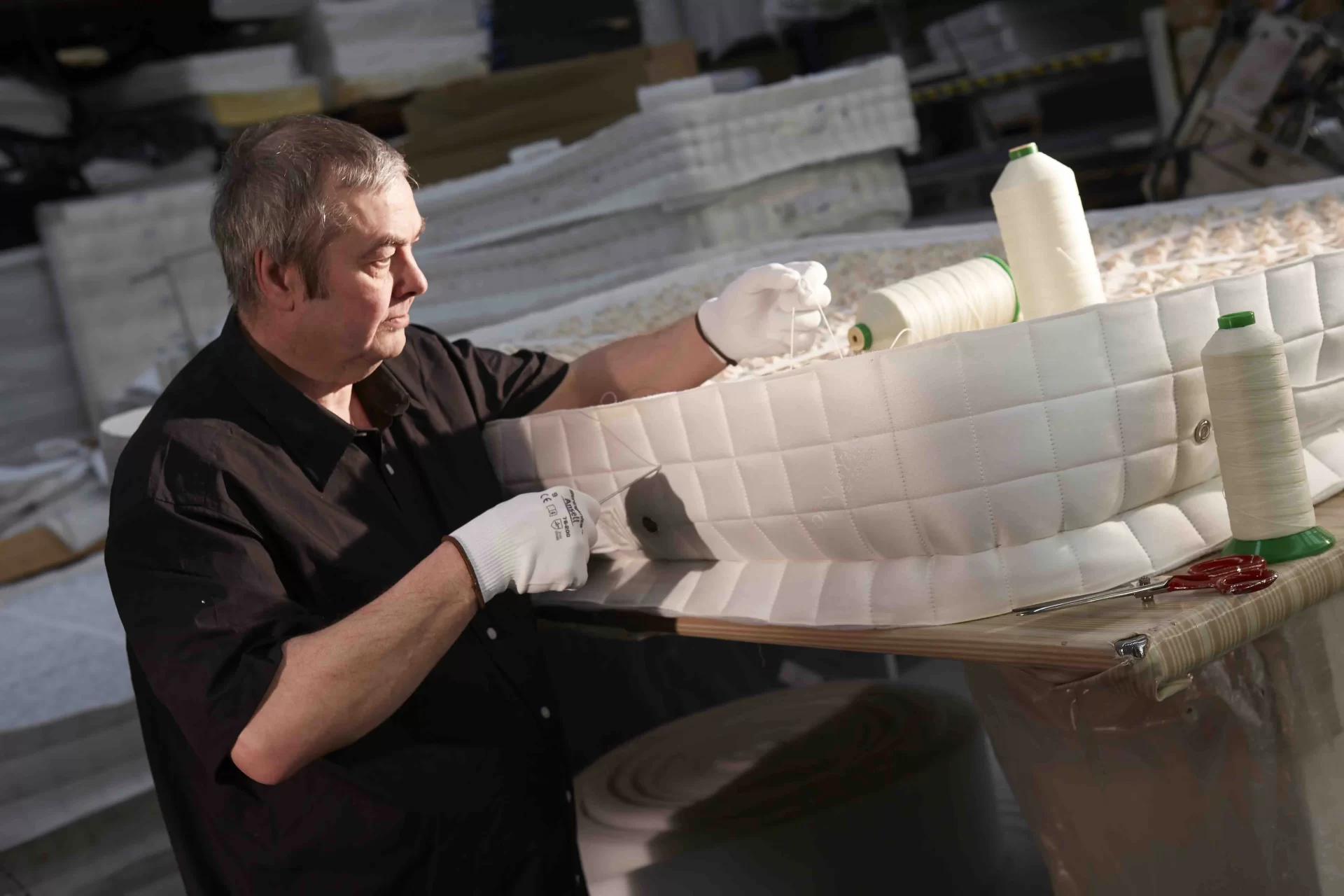
Typical GSM ranges vary significantly by fibre type and intended function. Support layers typically require 900 to 1500 GSM of horsehair or coir to provide adequate structural integrity. Comfort layers work effectively with 600 to 1200 GSM of wool, depending on the desired softness level. Luxury fibres such as cashmere provide meaningful benefits at lower GSM weights, typically 200 to 400 GSM.
Calculating total natural fibre content requires adding the GSM weights of all natural fibre layers. A typical Artisan mattress might contain 1200 GSM of horsehair, 900 GSM of British wool, and 300 GSM of cashmere, totalling 2400 GSM of natural fibres. This represents substantial natural fibre content that justifies the premium pricing.
Our GSM specifications surpass most competitors because we believe in transparency. Where other manufacturers use vague descriptions, we publish exact GSM weights for every natural fibre in every mattress. This transparency allows informed comparison shopping and ensures you receive the natural fibre content you’re paying for.
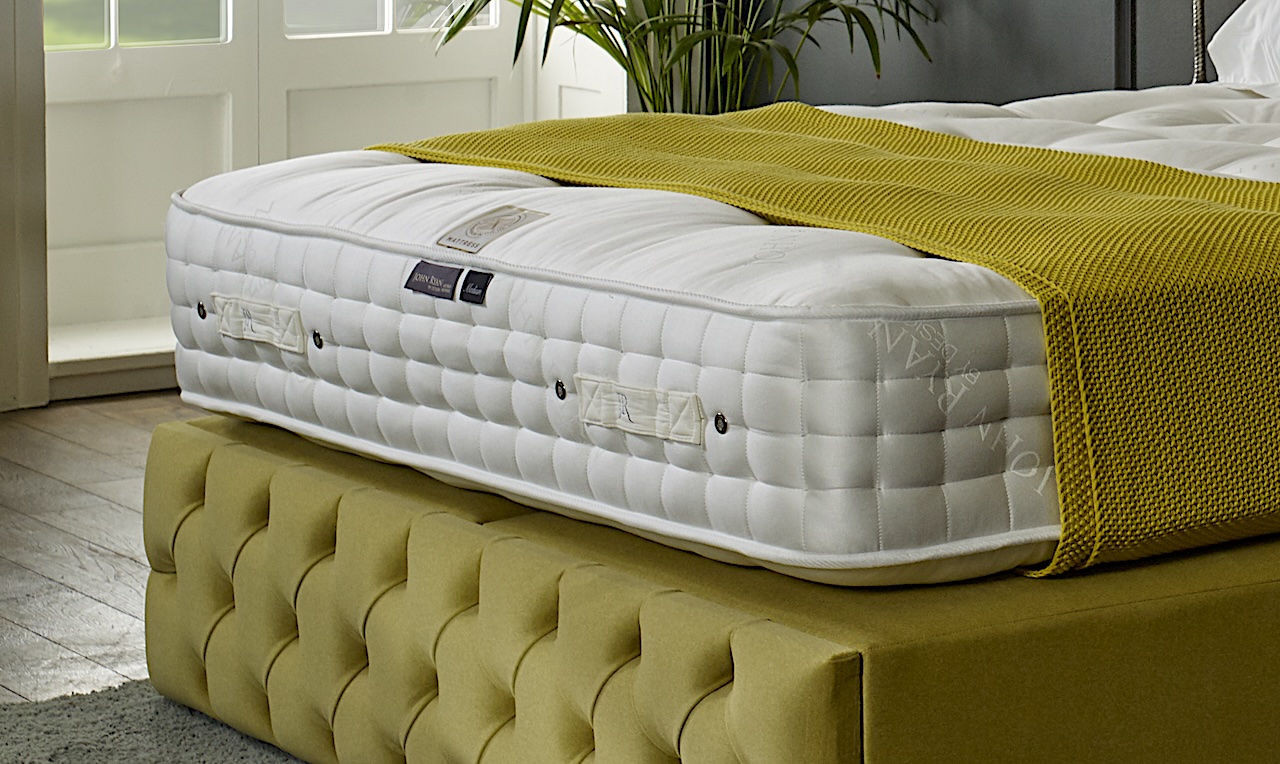
Warning signs of synthetic blending become apparent when manufacturers refuse to specify GSM weights or use terms like ‘natural fibre blend’ without percentages. These descriptions often hide the fact that supposed natural fibre mattresses contain primarily synthetic materials with token amounts of natural fibres for marketing purposes.
Natural vs Synthetic: The Critical Comparison
Natural Fibres
- Source: Animal and plant origins
- Processing: Minimal chemical treatment, often just washing and carding
- Lifespan: 15-25 years with proper maintenance
- Temperature: Self-regulating, adapts to ambient conditions
- Moisture Management: Natural wicking properties
- Fire Resistance: Inherently fire-resistant (wool, horsehair)
- Chemical Content: Chemical-free sleep environment
- Cost: Higher initial investment, lower lifetime cost
Synthetic Fibres (Polyester, Memory Foam, “White Fibre”)
- Source: Petroleum-based chemicals
- Processing: Heavily processed with chemical treatments
- Lifespan: 5-8 years before significant degradation
- Temperature: Heat retention, no natural regulation
- Moisture Management: Poor breathability, can trap moisture
- Fire Resistance: Requires chemical fire retardants
- Chemical Content: Off-gassing and chemical treatments
- Cost: Lower initial cost, higher replacement frequency
Choosing the Right Natural Fibre Mattress
Selecting natural fibres that match your individual needs requires understanding how different fibres affect sleep quality. Personal preferences, sleeping habits, and physical requirements all influence the optimal natural fibre combination.
For Hot Sleepers – The Artisan Naturals
Hot sleepers benefit most from natural fibres with superior cooling properties. Horsehair provides the ultimate cooling experience, with its hollow structure creating maximum airflow. Each hair acts as a miniature ventilation channel, facilitating heat dissipation that keeps you comfortable throughout the night.
Linen comfort layers add additional cooling benefits, with flax fibres naturally drawing heat away from your body. The cellular structure of linen creates a cooling effect that becomes more pronounced with use, making it ideal for individuals who tend to sleep warm. Our Artisan Naturals is the perfect mattress for hot sleepers, given its 83% natural fibre content and calico-encased pocket spring unit.
Bamboo provides cooling properties combined with moisture management, making it perfect for sleepers who experience both heat and humidity concerns. Its naturally smooth surface reduces friction whilst its cellular structure facilitates airflow.
Recommended combinations for hot sleepers include horsehair support layers with linen comfort layers and bamboo moisture management layers. GSM requirements typically range from 1200 to 1500 GSM of horsehair with 600 to 900 GSM of cooling comfort fibres.
For Support Needs – The Artisan Bespoke
Sleepers requiring additional support benefit from natural fibres that provide structural integrity whilst maintaining comfort. Horsehair offers the ideal combination of support and resilience, providing firm support that adapts to your body contours.
Coir creates zoned support areas where additional firmness is required. Its natural firmness makes it ideal for preventing pressure point development whilst maintaining overall comfort. Coir works particularly well for sleepers with back pain who need targeted support for specific body areas. Our Artisan Bespoke is the perfect firmer sleep system if you need support, and it’s 100% natural fibre too!
Back pain considerations require careful balance between support and pressure relief. Natural fibres achieve this balance through their ability to provide support where needed whilst conforming to body contours in pressure sensitive areas.
Firmness from natural materials develops gradually, allowing your body to adapt to the support characteristics over several weeks. This natural breaking in process creates personalised support that improves with use rather than deteriorating like synthetic alternatives.
For Allergy Sufferers – The Artisan Latex
Allergy sufferers benefit from the inherent hypoallergenic properties of natural fibres. Wool’s natural lanolin content provides antimicrobial protection without the need for chemical additives, creating an environment hostile to dust mites and bacteria.
Hypoallergenic options include organic cotton for those with a preference for plant-based fibres, wool for its natural antimicrobial properties, and bamboo for its cooling and antibacterial benefits. Our Artisan Latex is perfect for allergy sufferers as it uses Natural Latex and plant fibres, making it the UK’s premier Vegan mattress.
Chemical sensitivities require avoiding synthetic materials and chemical treatments. Our natural fibres undergo minimal processing using traditional methods that preserve their natural properties without introducing synthetic additives.
Organic certifications provide additional assurance for sensitive sleepers. Our organic cotton carries GOTS certification, whilst our wool meets Wool Board Assured standards for purity and processing methods.
Natural Fibre Mattress Care and Maintenance
Proper care extends the lifespan of natural fibre mattresses whilst maintaining their performance characteristics. Understanding appropriate maintenance procedures helps you protect your investment whilst ensuring optimal sleep quality.
Cleaning natural fibres safely requires understanding the properties of individual fibres. Wool and horsehair benefit from regular airing and rotation but should never be soaked or subjected to steam cleaning. Surface stains can be addressed with minimal moisture and natural cleaning products that don’t interfere with the fibres’ natural properties.
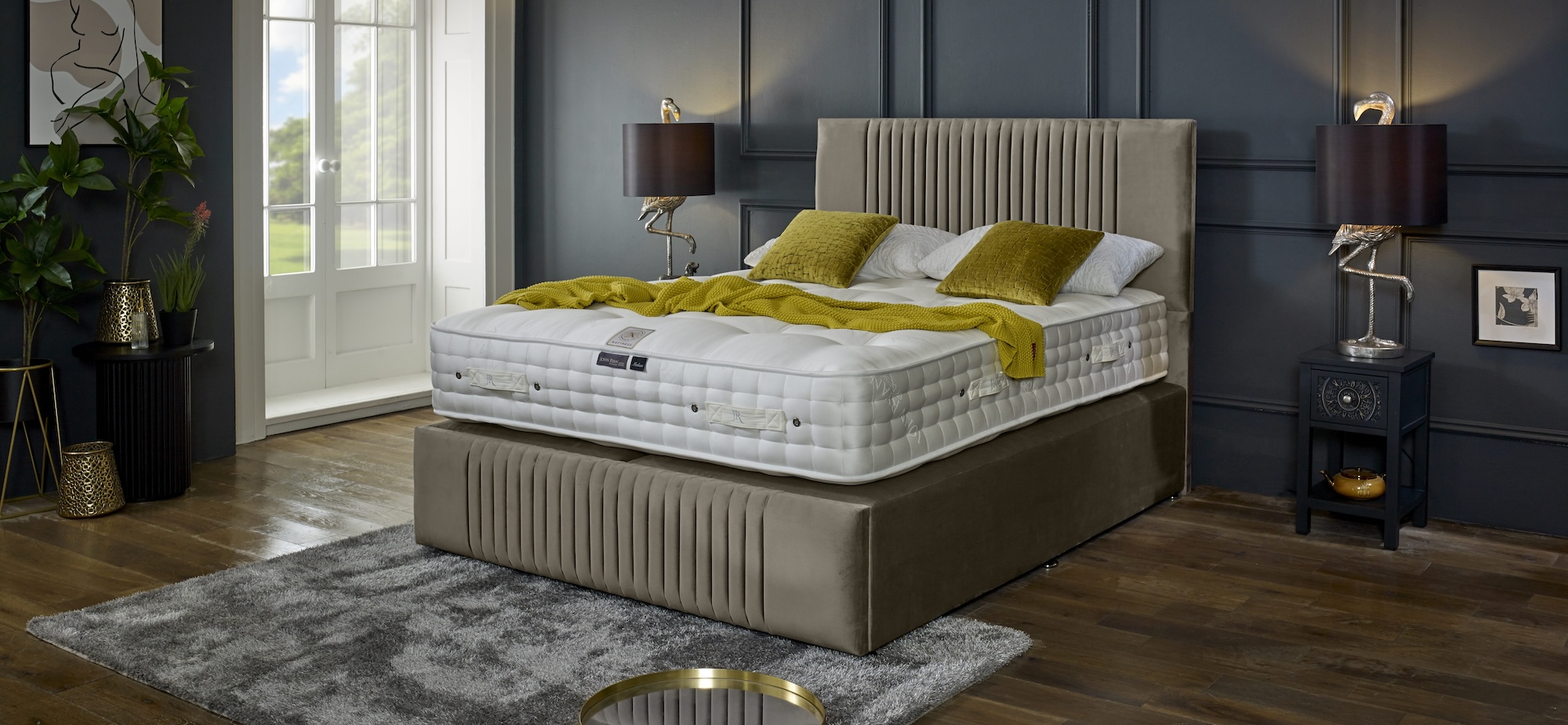
Maintenance requirements for natural fibre mattresses are minimal compared to synthetic alternatives. Regular rotation every three months ensures even wear, whilst occasional airing in dry conditions helps maintain freshness. Natural fibres’ inherent antimicrobial properties mean they require no chemical treatments to remain hygienic.
Lifespan expectations for properly maintained natural fibre mattresses range from 15 to 25 years, depending on usage patterns and care quality. This longevity reflects the durability of natural materials and the quality of traditional construction methods used in premium mattresses.
When to replace your natural fibre mattress becomes apparent through gradual changes in support and comfort characteristics rather than sudden failure. Unlike synthetic mattresses that develop uncomfortable pressure points or lose support dramatically, natural fibre mattresses age gracefully, providing clear indicators when replacement becomes beneficial.
Summary
Through 25 years of mattress manufacturing and membership in the Guild of Master Craftsmen, John Ryan By Design has developed unparalleled expertise in natural fibre applications. As NBF Premier Retail Champions and members of the Institute of Spring Technology, we have answered over 6000 customer questions about natural fibres, giving us unique insight into how these materials perform in real-world sleep environments.
Our commitment to publishing detailed GSM specifications sets us apart from manufacturers who hide behind vague marketing descriptions. Where others use token amounts of natural fibres in primarily synthetic constructions, our Artisan range contains 100% natural fibres throughout, with specifications that allow informed comparison shopping based on facts rather than marketing language.
For expert guidance on selecting natural fibres that match your specific sleep needs, contact our sleep specialists at 0161 437 4419. Our decades of hands-on manufacturing experience, combined with traditional Yorkshire craftsmanship techniques passed down through generations, ensure you receive a mattress worthy of our Guild of Master Craftsmen membership.
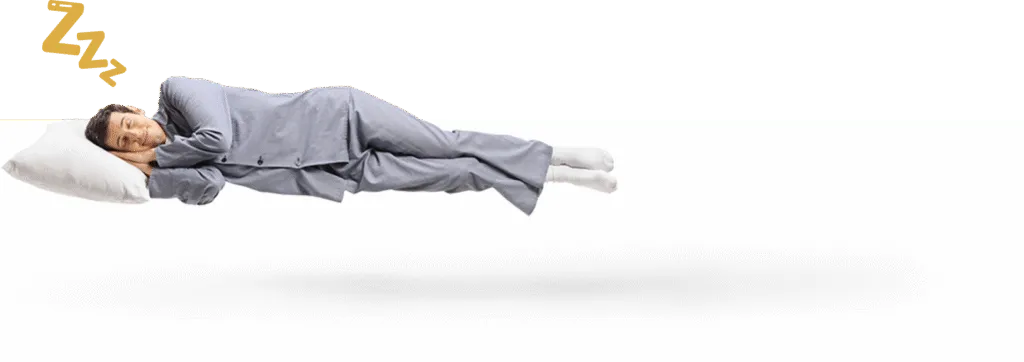
Dreaming of the perfect nights sleep?
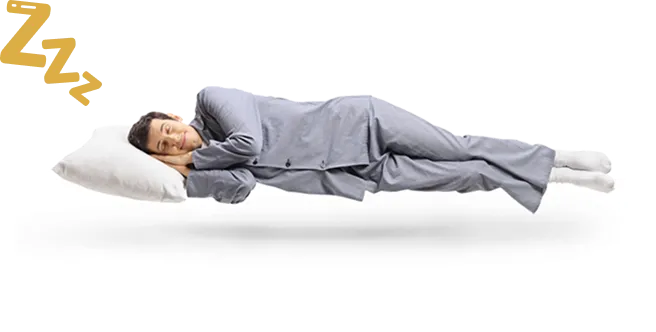
Ask us a question
There are over 6000 questions and answers submitted by you on all questions about mattresses and bed problems. Enter a keyword such as Vi Spring, John Lewis beds, bad back or Memory Foam and see if your question has already been answered.
If you can’t find an answer in knowledge hub, ask a new question. We aim to respond to all questions within one working day.
Newsletter
Enter your email to join our newsletter. We’ll send you occasional news and mattress expertise.

